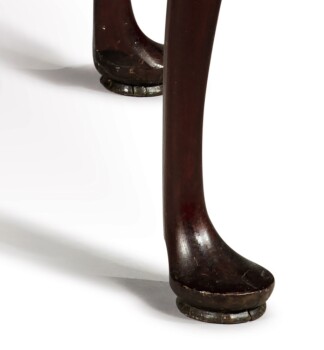I n the later part of the 18th century, Chippendale furniture reigned supreme in the Western world. Invented by English cabinet maker Thomas Chippendale, the style is a blend of gothic, rococo and Chinese influences, resulting in elaborately detailed works made from such exquisite wood as mahogany, walnut and/or cherry. While Chippendale style furniture was initially popularized in England, the designs quickly reached the American colonies thanks to Thomas Chippendale’s book on furniture design, entitled The Gentleman and Cabinet-Maker’s Director, published in London in 1754. Craftsmen in New England and Pennsylvania soon became Chippendale experts in their own right, and the furniture they built would eventually define the colonial design aesthetic in America.

The exceptional Chippendale Carved Cherrywood Bonnet-Top High Chest Of Drawers on offer in the upcoming auction – entitled Triumphant Grace: Important Americana from the Collection of Barbara and Arun Singh – is a superb embodiment of this period in American design. Likely from the hand of Connecticut-based furniture maker Calvin Willey (1769-post 1831), the work is thought to be made in Colchester, circa 1775. Carved from a rich cherrywood, the chest retains its original finials, brasses and exquisite detailing. Furthermore, the chest remains in remarkable condition with an ideally aged surface; to look upon it is to be transported to the Golden Age of Chippendale craftsmanship in America. Read on to learn more about the carved details that make this piece so unique.
Carved from a rich cherrywood, the chest retains its original finials, brasses and exquisite detailing.
The Crounce family of Altamont, New York owned this chest during the 20th century; an early history of the chest is not known. Willey could have made the chest while he was working in Colchester, Lenox or possibly Vermont, where he was living after 1795.
The chest is a highlight of Sotheby's Americana Week, and will be on display in New York from 16 – 24 January before the live sale on 25 January.
More Chippendale to Discover
1. Thomas P. Kugelman and Alice K. Kugelman with Robert Lionetti, Connecticut Valley
Furniture: Eliphalet Chapin and His Contemporaries, 1750-1800 (Hartford: Connecticut






























